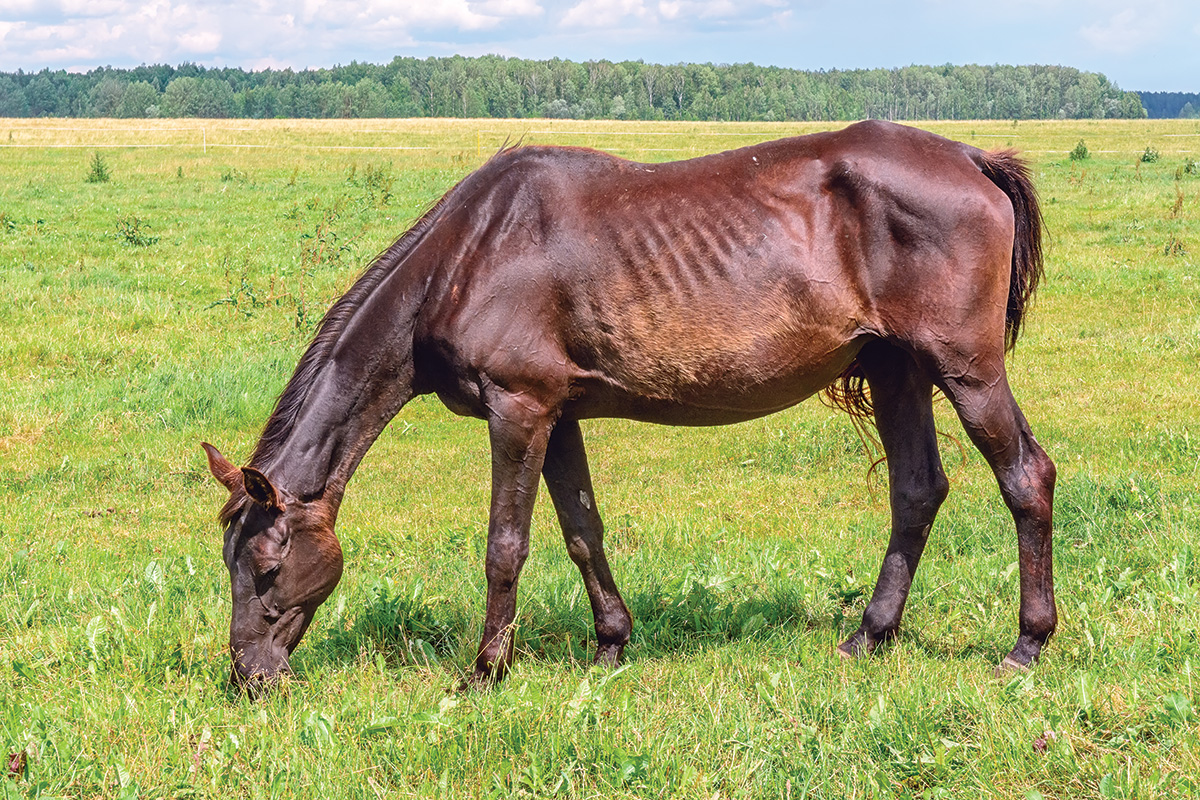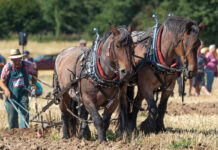
You know the type if you’ve ever had one. The picky eater that plays with his grain unless it’s exactly the right combination of toppers and supplements; the horse who always has a faint hint of ribs showing despite the loads of hay you shovel into his stall every day. Let’s take a look at some feeding techniques you can use to put the pounds back on a so-called hard keeper.
1. Top Hard Keeper Hack: Feeding More Calories
If your horse needs to gain weight, an obvious first step is to add calories to the horse’s diet. Increasing concentrated feed (grain) can certainly do this, although you don’t want to overload the digestive system with starches and sugars found in grain. Keep each meal at 5 pounds or less for an average 1,100-pound horse so he can safely break down the nutrients.
Increasing calories from fiber is often a preferable method. Beet pulp or alfalfa cubes provide easily digestible, high-calorie fiber; and you can soak them right before serving to make them easy to consume. These can also be mixed with a grain concentrate if desired.
Additionally, consider the quality of your hay as well as the amount fed. Quality hay that is harvested at an earlier, leafy stage, is more nutrient-dense than mature, stemmy hay. Hay that is less than a year old, and stored properly, will also carry more nutritional value and supply the most energy. Switching from grass hay to a grass/alfalfa mixture can be beneficial, as alfalfa packs additional calories over grass hay (around 25 percent more).
Finally, getting your horse onto quality pasture for long hours of grazing in a relaxing herd setting can sometimes be a great addition. (As with increasing concentrated feed, care must be taken to increase grazing time slowly to avoid colic or founder.)
2. Fat Supplements
Sometimes a hard keeper will still need more calories, even when feeding concentrated feed and free-choice forage.
“The safest approach is to add calories with fat,” says Mike Graper, DVM, of Cornerstone Equine Services in Rhinelander, Wisc. “Most senior feeds have increased fat levels, and I’ve used them even with underweight yearlings.”
It’s also possible to supplement pure fats, such as vegetable oil top-dressed on your horse’s grain. One problem is that vegetable oil can get a little messy, and your horse may not like the taste. If this happens, you can try rice bran or a powdered (and perhaps more palatable) commercial weight-building supplement.
“Whole-roasted soybeans are high in fat as well as protein, and are a useful addition for thin horses that are still in work,” says Graper, noting that straight fat supplements should be added slowly to prevent loose stool.
Starting with 2 tablespoons twice a day and working up to 1 to 2 cups total per day may help the body adjust well.
“The type of fat doesn’t really matter, as in the case of the thin horse, we don’t care about the fatty acid distribution, we just want the calories,” Graper says. “In cases where we are concerned about which fatty acids are in the fat source (such as Culicoides hypersensitivity, aka sweet itch), you’d lean toward ground, stabilized flax seed or flax seed oil. Otherwise, feed whatever fat the horse will eat at the lowest cost.”
3. Digestive Supplements
You can also talk to your horse’s veterinarian about using probiotics or prebiotics to aid your horse’s digestive system. While these products don’t directly add calories, they can help your horse’s body put food to better use so your hard keeper can get more energy out of what you’re feeding him.
4. Take It Slow
You’re probably aware that it’s important to make slow adjustments in feed types, supplements, and amounts in order to give your horse’s digestive system a chance to adapt to the new modifications. But it’s also important to take things slowly in order to give the new supplement or feed time to work and cause a visible difference.
Depending on the horse, you may need to wait two to four weeks to see the effects. Give it time.
5. Separate the Hard Keeper From Other Horses While Feeding
Finally, be sure your underweight horse is getting the chance to consume the feed you offer! Horses in a group setting may squabble over pecking order, and older horses in particular may be pushed away from communal hay piles.
Also, a horse that eats more slowly will obtain less when fed in a group. You may need to temporarily separate your underweight horse during meals so that you can confidently control his rations until he reaches the desired weight. To ensure your hard keeper is getting his full meal, try feeding him separately from other horses.
The best place to begin is free-choice hay, water, and a salt block; the rest of these suggestions can be added from there to see which works best for your horse. Always form a plan under the guidance of your horse’s veterinarian for the best and safest results.
This article about feeding a hard keeper appeared in the June 2022 issue of Horse Illustrated magazine. Click here to subscribe!





